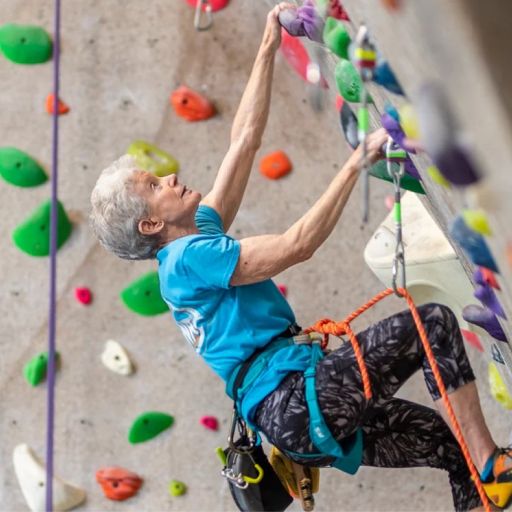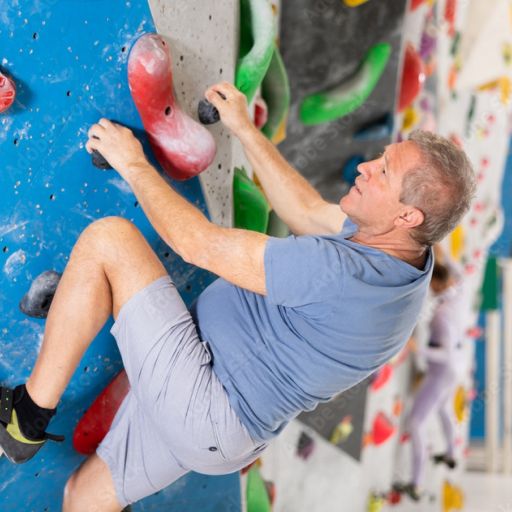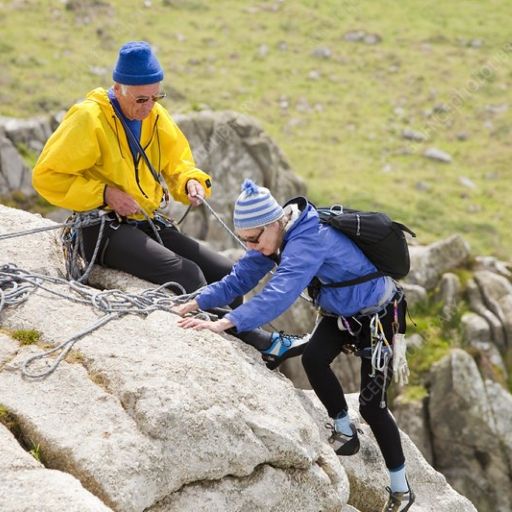Advertisement
In the United States, more and more seniors are choosing rock climbing as an active and healthy lifestyle. While the sport may seem dangerous and challenging, it offers countless physical and mental benefits.
In the fall and winter months, rock climbing is even more unique for seniors, who not only have to deal with climate change, but also have to overcome the physical limitations that come with age.
However, these challenges do not stop their passion for rock climbing. On the contrary, through persistent efforts and scientific methods, they enjoy a unique rock climbing experience in the cold season.
1. The attraction of rock climbing for the elderly
First of all, we need to understand why older people choose such a high-intensity and high-risk sport. In fact, rock climbing has a significant positive impact on the physical and mental health of older adults.
Self-challenge and sense of accomplishment: Many older adults look for new hobbies after retirement to keep their lives active and their spirits high.
Rock climbing provides a platform for constant self-challenge, and each successful ascent brings a great sense of achievement, making them feel that they can still overcome obstacles and achieve their goals.
Social interaction: Participating in rock climbing activities not only allows you to meet new like-minded people, but also strengthens the bond with family and friends and share the joy of the sport together.
This social interaction is especially important in preventing loneliness and depression. Escape from daily stress: Outdoor activities in nature, such as rock climbing, allow one to temporarily get away from the hustle and bustle of the city and daily chores, and enjoy the tranquility and beauty of the landscape.
This environment has a healing effect in itself and helps reduce stress and anxiety.

2. Challenges specific to the fall and winter seasons
Despite the many benefits, outdoor rock climbing in the fall and winter months also means more difficulties and risks. Sudden drops in temperature, unstable weather and shorter daylight hours are all issues that must be faced.
Cold conditions: Cold temperatures can stiffen muscles and increase the risk of injury. Therefore, it is especially important to warm up adequately in cold weather. In addition, you need to wear warm equipment, such as fleece clothing and windproof jackets, to maintain your body temperature.
Wet and slippery road surface: Frequent rain and snow in fall and winter make the surface of the rock wall more slippery, which requires more technical requirements.
At this time, choosing professional hiking shoes with better friction and carrying drying powders (such as magnesium powder) can provide extra protection.
Wide temperature difference between morning and evening: The temperature fluctuates greatly during the day, so you need to increase or decrease your clothing in a timely manner according to the actual situation.
At the same time, special attention should be paid to keeping fingers, toes and other end parts warm, as these parts are most vulnerable to the effects of frostbite. Short daylight hours: Early darkness means less time available for activities, so it is vital to organize your time wisely.
For example, you can plan your route in advance and make sure you return to a safe place before dark. If nighttime activities are planned, lighting equipment such as headlamps and sufficient batteries are required.

Advertisement
3. Scientific Method and Preparation
In order to minimize risk and increase efficiency, many professional institutions and organizations in the United States offer rock climbing training courses specifically for seniors.
These courses usually cover the following aspects: explanation of basic knowledge: including how to choose the right equipment for themselves, such as shoes, harnesses, helmets, etc.; how to check whether the equipment is intact; the basic knot skills and how to use them.
Physical training program: according to the individual physical condition to develop a corresponding training program, including strength training, aerobic exercise and balance exercises, etc., in order to improve the overall physical quality.
Simulated Training Scenarios: Simulated training is conducted on the indoor artificial wall to familiarize with the technical details through constant repetition of movements and to correct the wrong postures under the guidance of the coach to improve the actual combat ability.
Safety Awareness Cultivation: Learn how to assess environmental risks, such as observing weather changes and recognizing potentially dangerous areas; master self-rescue and other rescue skills in emergency situations, such as how to deal with common accidents such as falls and fractures.

4. Important benefits to physical health
In addition to its recreational value, rock climbing also has many positive effects on the physical health of the elderly: Enhance physical strength and flexibility: by constantly climbing and adjusting the posture, it can comprehensively exercise many parts of the body such as the arms, legs, core muscles, etc., which helps to improve the overall physical quality.
Improved balance: A sense of balance is an important factor in preventing falls, which are a major health threat to older adults. By constantly adjusting the center of gravity of the body to adapt to different climbing angles, seniors inadvertently enhance their balance.
Promotes mental health: Waiting “for the rabbit to come out of the hat” fosters excellent patience and trains concentration - all important factors in maintaining cognitive function, which can help to slow down the rate of cognitive decline.
In addition, the sense of accomplishment after reaching the summit, the satisfaction of self-transcendence, and the team spirit of accomplishing a goal with peers can greatly enhance psychological well-being.
This is especially important for the elderly who are prone to loneliness and depression. Improve cardiovascular function: The combination of “slow” exercise and fresh air is very beneficial for regulating blood pressure and promoting the circulatory system.
At the same time, the negative oxygen ions in the natural environment also improve the quality of breathing, which has a positive effect on lung health.

5. Elderly and Family Support
In addition to personal efforts, family support is also one of the important factors contributing to success. In the United States, there are many young people who encourage their parents to participate in their favorite sports by accompanying them to training or competitions.
This not only allows the elderly to feel the encouragement from their relatives, but also further closes the intergenerational relationship and makes the family atmosphere more harmonious.
In addition, some community centers also organize group activities regularly to provide a platform for the elderly to communicate with each other, so that they can motivate each other and make progress together.
Whether it's challenging rock climbing or peaceful nature exploration, both reflect the diversity of choices older Americans have in pursuing a healthy lifestyle. They not only meet the needs of different personalities, but also add color to the later years of life.
Most importantly, through these outdoor activities, they find ways to maintain their youthful vitality and redefine their “post-retirement” lives.
Therefore, we can say that no matter in spring, summer, fall or winter, as long as the courage to take that step, every elderly person can find their own source of happiness and get fruitful rewards from it.
Advertisement





